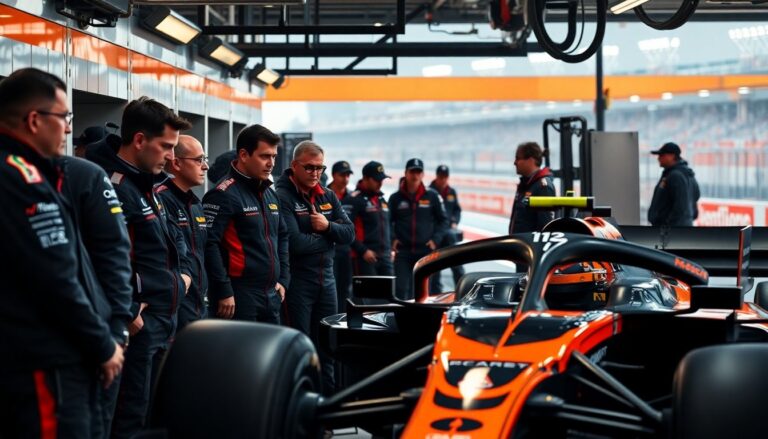Argomenti trattati
In the competitive realm of Formula 1, conflicts on the racetrack can significantly impact team dynamics. The recent incident between McLaren’s drivers, Lando Norris and Oscar Piastri, during the Singapore Grand Prix, has raised concerns and prompted discussions regarding the team’s response. As teams strive for success, balancing competition with camaraderie is essential.
Following the race, McLaren’s team principal, Andrea Stella, addressed the incident, noting that close racing often leads to unexpected situations. His remarks underscore the inherent challenges drivers face when competing at such high speeds. The incident has spurred the team to reassess their strategies and maintain harmony among team members.
Revisiting the Singapore clash
The first-lap incident during the Singapore Grand Prix marked a crucial moment for McLaren, highlighting the fierce rivalry and competitive drive between Norris and Piastri. Both drivers are keen to establish their credentials, which can occasionally lead to friction, particularly in a sport where mere fractions of a second dictate success or failure. The incident has left fans and analysts questioning how the team will manage the aftermath.
Team principal’s perspective
Stella’s insights into the situation reflect a comprehensive understanding of racing dynamics. He acknowledged that incidents are inevitable in such high-pressure environments. The team’s strategy for resolving this conflict will be critical in ensuring both drivers feel valued and heard. Stella emphasized the importance of open dialogue, stating, “We will review the situation together with our drivers, just as we did after the Canada race.” This commitment to fostering communication highlights the team’s proactive approach in addressing concerns.
Moving forward: Strategies for resolution
As McLaren looks to the future, addressing driver tensions will be vital. The team recognizes the significant potential of both Norris and Piastri, making coexistence essential for their overall performance. The team’s strategy will likely include one-on-one discussions with each driver to explore their viewpoints and feelings regarding the incident.
Importance of communication
Effective communication serves as the foundation of any successful team. McLaren’s management is likely to facilitate discussions that focus not only on the incident but also on fostering a collaborative spirit. By creating an environment where both drivers can freely express their thoughts and feelings, the team aims to rebuild trust and ensure Norris and Piastri can work towards shared objectives.
Moreover, cultivating a supportive atmosphere can help mitigate future clashes. Teams that prioritize their drivers’ mental well-being and interpersonal relationships often achieve improved performance on the track. McLaren’s leadership is aware of this dynamic and is committed to fostering a positive team culture.
Lessons learned from past experiences
The situation in Singapore is not McLaren’s first encounter with challenges related to driver dynamics. Previous incidents, including those following the Canadian Grand Prix, have offered valuable lessons. By applying insights from these experiences, McLaren can devise strategies to not only address conflicts as they arise but also proactively prevent them.
Stella’s reference to discussions after the Canadian race emphasizes the significance of reflective practice. Such conversations enable the team to analyze both on-track actions and the emotional responses that affect teamwork. By adopting a holistic approach, McLaren can cultivate a more resilient and cohesive unit.
The road ahead for McLaren
The clash between Norris and Piastri during the Singapore Grand Prix may have stirred tensions within McLaren, but it also offers an opportunity for growth and improvement. As the team navigates this complex situation, their emphasis on communication, understanding, and teamwork will be crucial in shaping their future. By directly addressing tensions and promoting a collaborative environment, McLaren has the potential to emerge stronger, ultimately enhancing their performance on the track.

